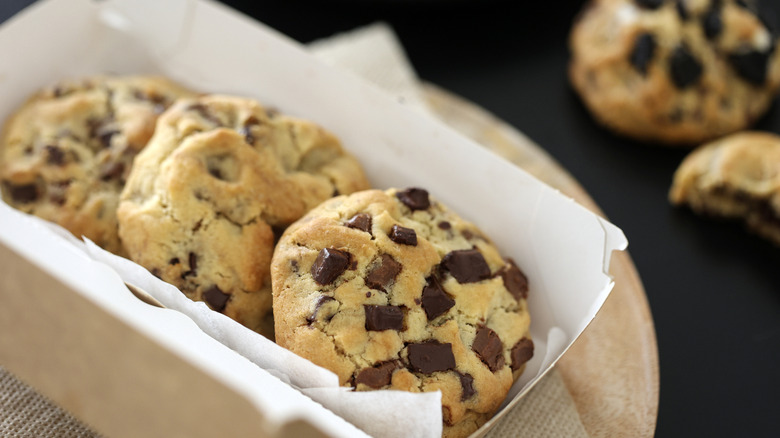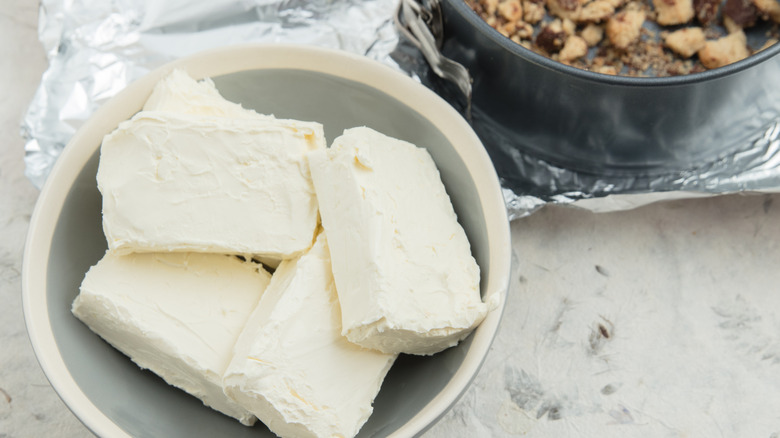The Creamy Ingredient Swap For Butter That Yields Fluffier Cookies
Butter is a baking staple — like European-style butter, the best type for making cookies — that contributes to the flavor and texture of delectable desserts, pastries, and other baked goods. But there are other ingredients you can swap in as a replacement, for instance, when you need a substitute for vegan cookies, or just if you want to try an alternative that has its own perks. Enter cream cheese. Using it as a butter stand-in will create cookies with a soft, pillowy texture, as explained to us by Audra Fullerton, head recipe developer and baking expert at The Baker Chick.
Fullerton told Food Republic, "Cream cheese has a lower fat content than butter but a higher moisture content. So cookies will be fluffier vs. more chewy and dense." Cream cheese has 10 grams of fat per ounce compared to 24 grams of fat for butter, and up to 55% moisture to butter's 16 to 18% water. Because of those differences, she advised, "If you want a very firm sugar cookie that sticks to the shape you cut out, I would not sub cream cheese. It would work well in a drop cookie though."
This cream cheese fill-in will also affect flavor, adding tanginess to the cookies. That contrast can provide balance for those with more sweetness like sugar cookies, or that have chocolate, like classic chocolate chip cookies. It's also a tasty way to get in a little more protein, since cream cheese has 2 grams of protein per ounce, almost 10 times as much as butter.
How to use cream cheese in place of butter for cookies
Exchanging butter for cream cheese in cookie baking is an even swap; you use the same amount as the butter listed in the recipe. (You could also do this with mascarpone, or with ricotta or cottage cheese strained to remove excess liquid.) Use full-fat cream cheese for optimal richness, moisture, and tenderness, and let it soften before making the cookie dough. In a hurry? Use the hot bowl hack to quickly soften the cream cheese.
The cheese's moisture will make a stickier dough, so you can use some flour on your hands, spoon, or cookie scoop when portioning it out. The substitution will also produce paler cookies since butter promotes browning. Bouncing back from a gentle finger press will help let you know they're ready to come out of the oven. For an even softer cookie, try making them with cake flour instead of all-purpose.
Instead of doing a full butter switch, you could replace half of it with cream cheese. This gives you benefits from both, getting cream cheese's puffy effect while keeping butter's rich flavor. This could be particularly good for cookies that aren't as sweet or don't have chocolate, when you might want less of the cheese's tang. If you want to go in the other direction with a double dose of cream cheese, spread frosting made with it on the cookies.


